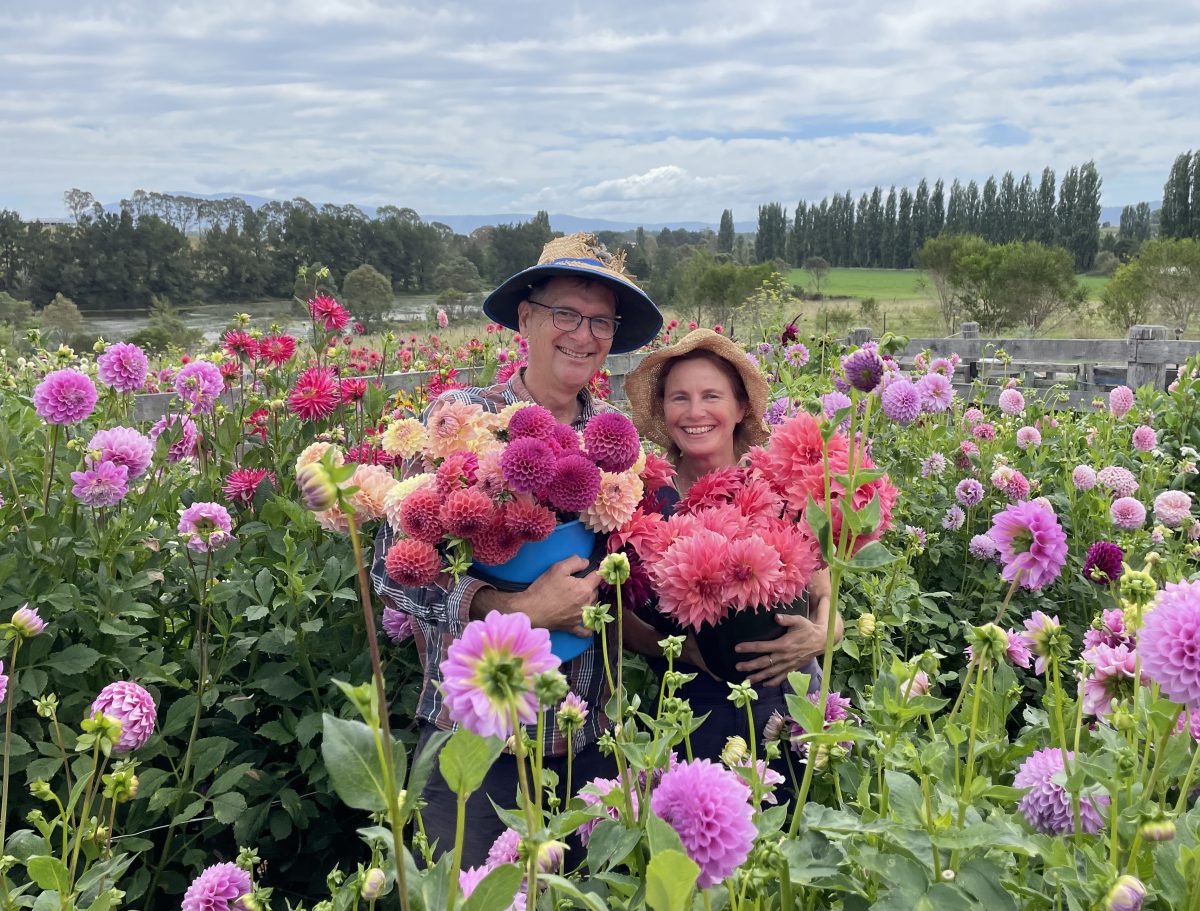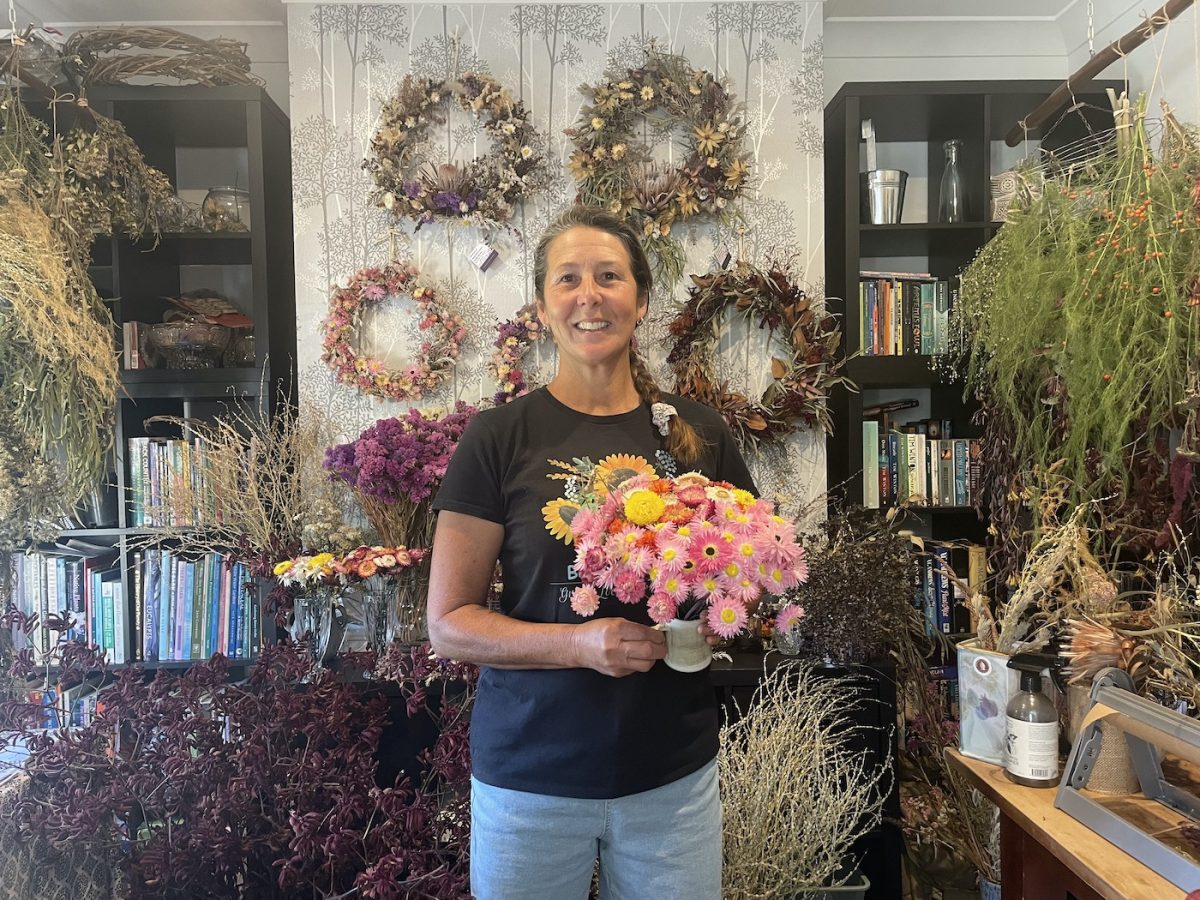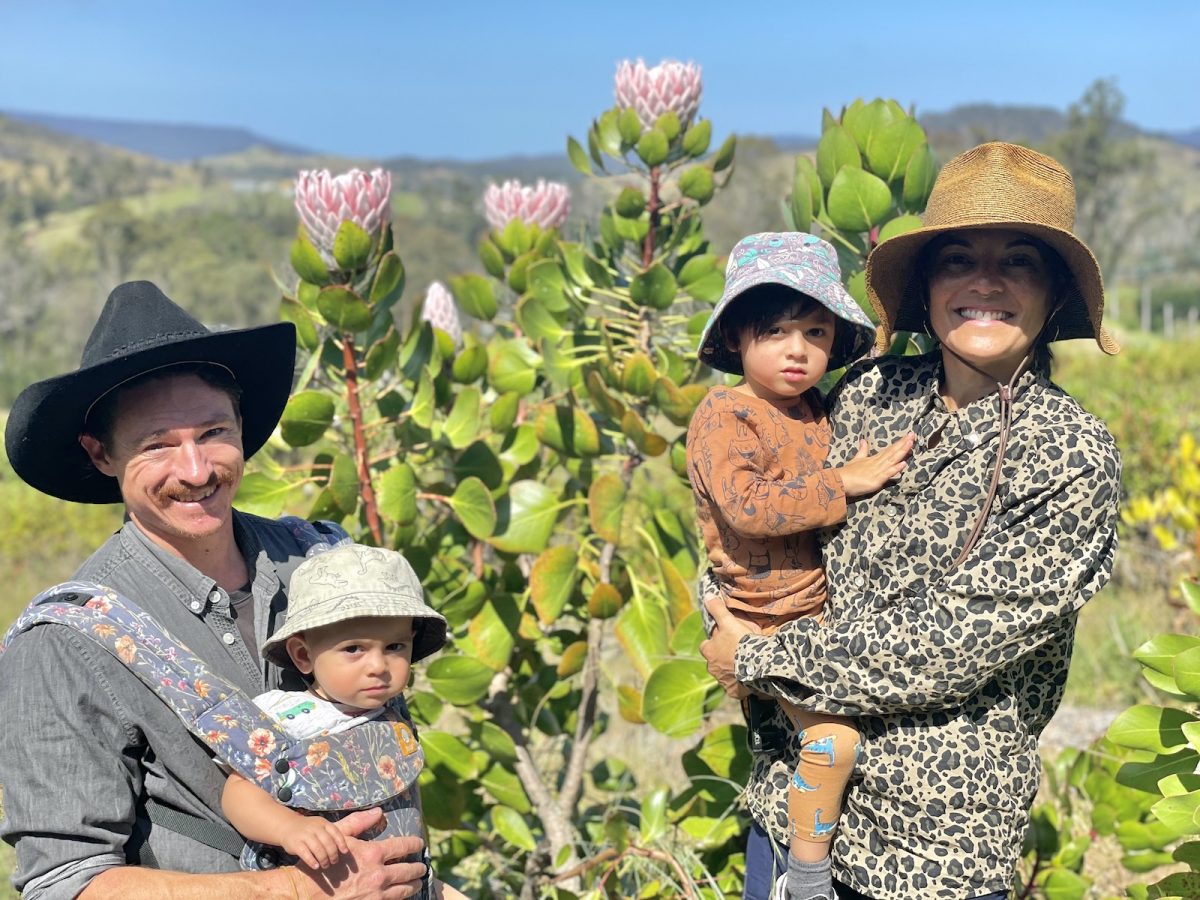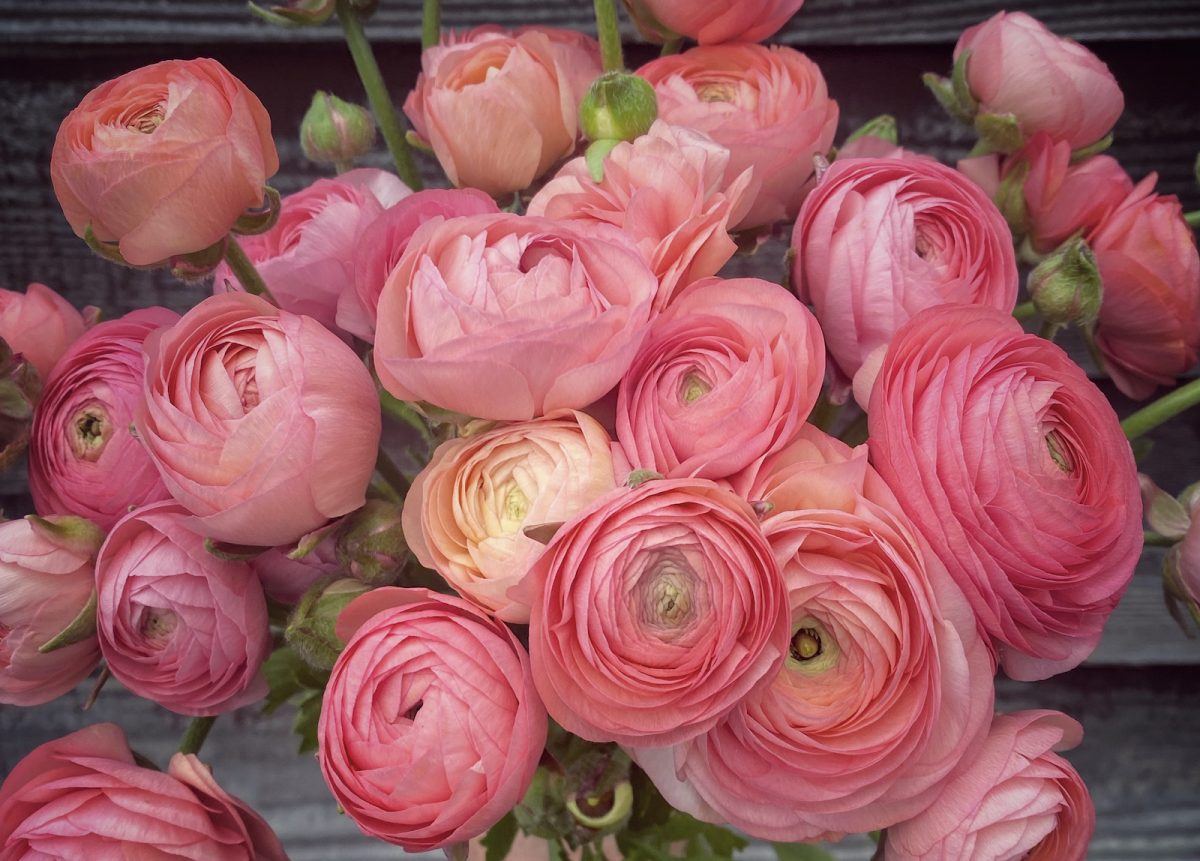
Geoffrey Badger and Ali Rodway commence a day of picking dahlias at Buckajo Flowers, Bega Valley. Photo: Lisa Herbert.
In the first of two articles about the blossoming flower industry in the Bega Valley, Lisa Herbert visits flower growers from Wallagoot to Wyndham.
Ali Rodway holds up a spectacular neon dahlia bloom saying, “This is what we call Buckajo Watermelon, or Carlos Watermelon. We have grown these for 20 years. It’s really the flower that started Buckajo Flowers.”
Ali and her partner, Geoffrey Badger, live and work on their flower farm near the Bega River, taking dozens of arrangements to the weekly Bega Valley Produce Market, as well as supplying local florists.
It’s dahlia season when we visit. “They are really my faves,” says Ali. “They’re so abundant with so many varieties, different colours and shapes and each season you get new ones, breed some new ones.
“Each season, seeing the flower coming out for the first time, it’s like meeting a new friend. Seeing the usual ones come out is like, ‘Oh, there you are, hello again!’”
I ask Ali if there are more dahlias around of late. “Yes,” she says, “they’ve had an extreme comeback.
“We clear the whole field for market, pick it all in one day, get the air-con on inside, create the arrangements and take them out the next morning so they are very fresh.
“We sell our tubers in spring; we lift them and store them well – with a rainy year they will rot. We lift and divide them. If you do that and plant one back, you give them space to grow and it allows for more sun on the plant, it revitalises them.”

Karen Mumberson loves her strawflowers and working with dried arrangements grown at Bournda. Photo: Lisa Herbert.
Far from the green fields of the Bega River lands, Karen Mumberson of Bournda Grow produces cottage flowers and natives in difficult soil near Wallagoot Lake.
In this part of the coast Karen and her partner struggle to keep the possums away from the rose plants, and build intricate fences to keep the wallabies out of her flower beds.
Karen makes and sells from 12 to 20 bouquets around the valley each week, at Kalaru, Tathra General Store, the Tathra Wharf and Pambula Fruit Market.
“This week I’m taking any remaining flowers down to Dad’s nursing home at Merimbula for their flower arranging activity. They really appreciate them which makes me happy.”
She finds most pleasure working with dried flowers. “This is what I love, but it’s not a big thing in terms of sales. I’d love to be able to sell online but delivering is not an option, they’re too fragile, but I’m working towards having a stall at the markets.
“It takes so much time to sow and grow and water and harvest; there is so much involved in growing flowers, but I love it.”

Tayo Wilson and Florian, and Karen Dalley and Quincey with a burgeoning king protea at Wyndham. Photo: Lisa Herbert.
After driving through recently scorched forests around Wyndham, the road opens into a valley adorned with rows of silver blue gum, dark low shrubs and bright green protea plants. We’ve arrived at Wyndham Flower Farm.
Karen Dalley and Tayo Wilson and their two young boys take me out into their 10-acre field to visit the glorious king proteas which are just starting their season on the family-run farm.
“Proteas are South African natives that grow really well here; we have several varieties and also grow leucadendrons, leucospermum (pincushion proteas), and many small Australian native trees, and the eucalypts.”
Tayo’s parents started farming flowers back in 1995, exporting most of their product.
“Now the Australian market is evolved enough,” says Tayo. “Originally they were exporting a lot of product, as the local market wasn’t strong for Australian flowers.
“Then it changed and they found a seller at Sydney Flower Market and we still sell to them. We send to Sydney, some local sellers in the Bega Valley, and also Narooma, Moruya and Braidwood.
“They’ve stepped back a bit now that we’re here, but Mum and Dad’s idea was to grow proteas and Australian natives, and it worked,” Tayo says.

Italian ranunculus grown by Sam Spencer of Stonecrop Flora, at Locheil. Photo: Sam Spencer.
Around five years ago, Sam Spencer of Stonecrop Flora in Lochiel, started growing flowers on her 25 acres outside Pambula.
“I mainly grow cottage flowers like zinnias, cosmos, snapdragons,” Sam says. “They’re quite nostalgic, maybe they remind you of your grandma’s garden.” Sam also grows the mysterious ranunculus in spring, and sunflowers.
As with all farming, life can be stressful around the weather.
“Last year in early spring we had so much rain our snapdragons and stock flowers rotted. And my dahlias are only now breaking soil as I planted quite late with the cooler weather.”
Sam also enjoys being part of a group of growers in the valley. “We all talk to one another, share seed and tubers,” she says.
“It’s nice to work with a beautiful product, but it’s not all dancing around in linen and sun hats, it is filthy work. But also rewarding.”








